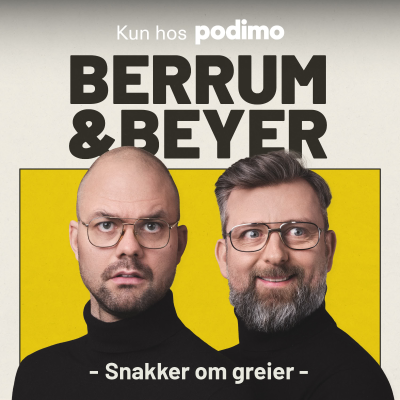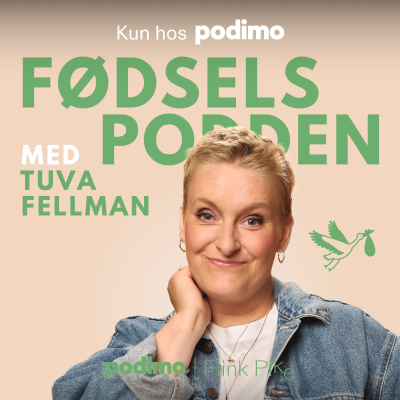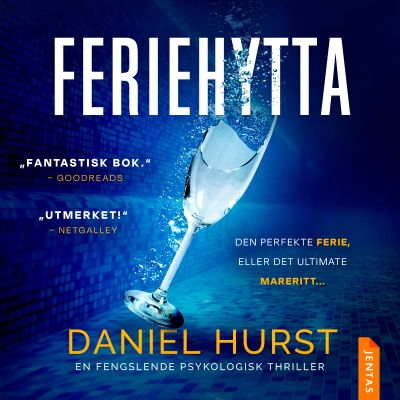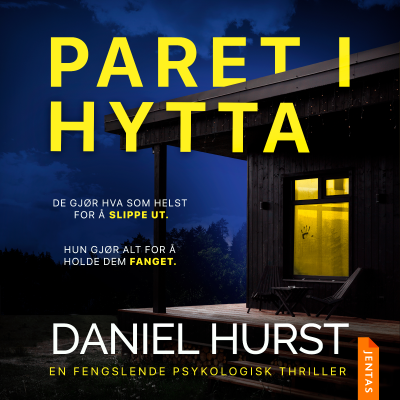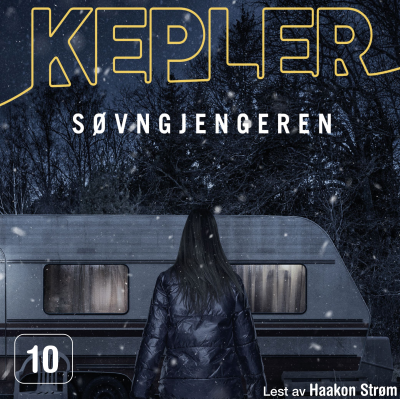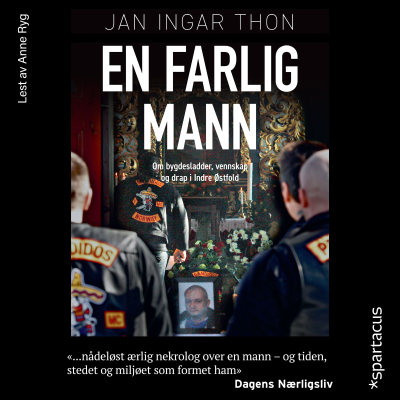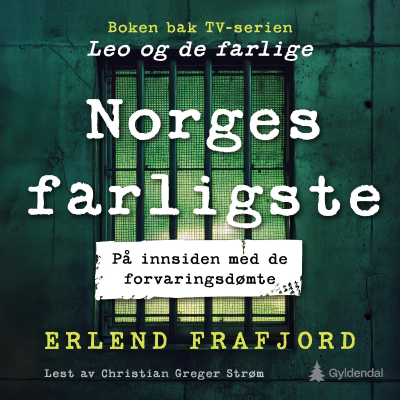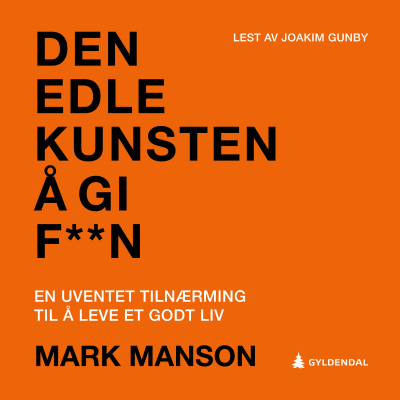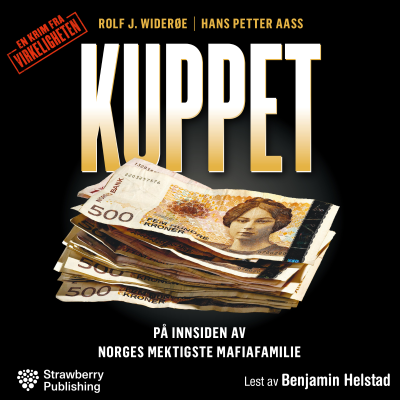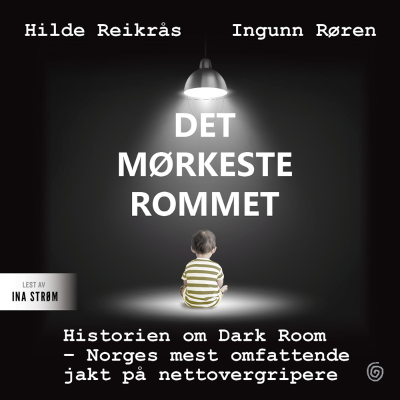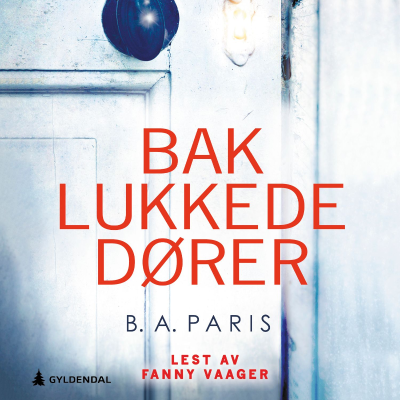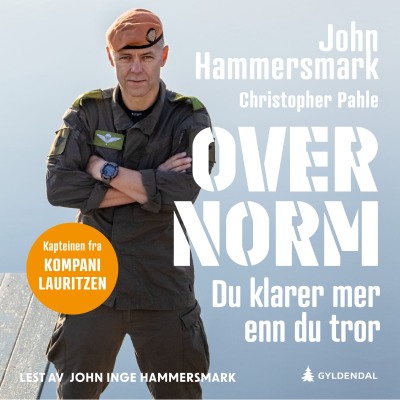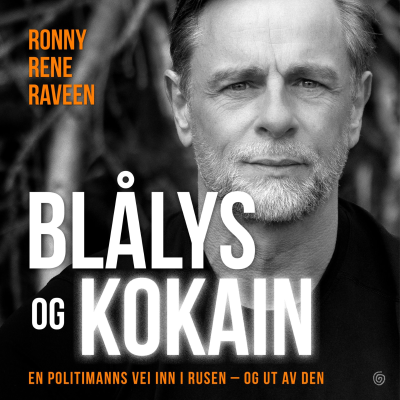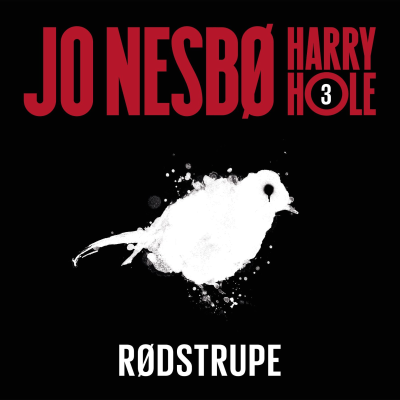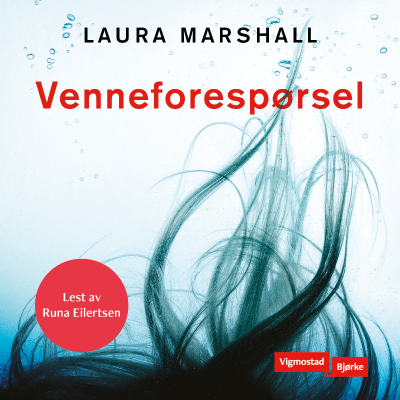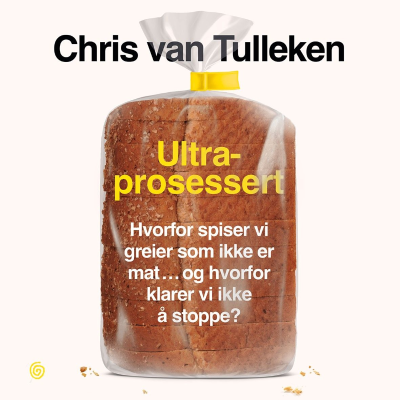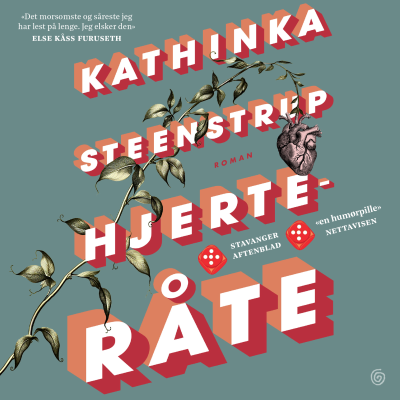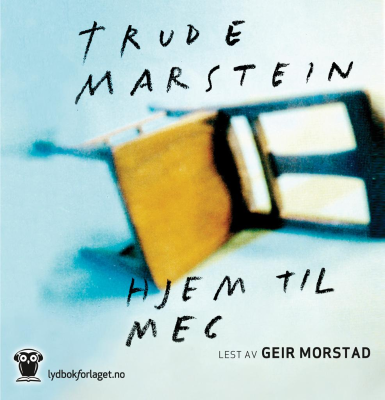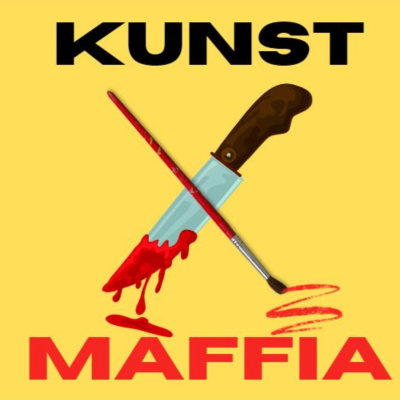
Kunstmaffia
nederlandsk
True crime
Prøv gratis i 14 dager
99 kr / Måned etter prøveperioden.Avslutt når som helst.
- 20 timer lydbøker i måneden
- Eksklusive podkaster
- Gratis podkaster
Les mer Kunstmaffia
Kunstmaffia is een podcast over roof, vervalsing en zwendel in de internationale Kunst- en Antiekwereld. Door Rik Bouman en Robert Tetteroo. Instagram: @Kunstmaffia Luister je graag naar onze podcast serie? Je kunt ons een fooi (elk gewenst bedrag, anoniem, eenmalig of maandelijks) geven via: https://fooienpod.com/kunstmaffia
Alle episoder
76 EpisoderDerde Ronde van Los Angeles van 1932 tot 2028: De zwarte bladzijde van Munchen 1972
The seventeenth installment of our podcast, Derde Ronde LE, delves into the tragic events that transpired during the 1972 Munich Olympics, a moment that marked a profound shift in the perception of the Olympic Games. We explore how what commenced as the "Joyful Games" was irrevocably transformed into a scene of horror when a group of Palestinian terrorists infiltrated the Olympic Village, resulting in the hostage situation that culminated in the tragic loss of nine Israeli athletes. The episode examines not only the immediate impact of these events on the athletes and spectators but also the broader implications for international sports and security. As we recount the harrowing details of the attack and its aftermath, we reflect on the lessons learned and the indelible mark left on Olympic history. This episode serves as a somber reminder of the intersection between sport and geopolitics, inviting listeners to consider the complexities that arise when global events are overshadowed by acts of violence. The seventeenth installment of our podcast delves into the harrowing events of the 1972 Munich Olympics, a moment which marked a profound shift in the perception of international sporting events. This episode meticulously recounts the unfolding of tragic occurrences, beginning with the peaceful ambiance of the games, which were initially heralded as the 'happy games'. The narrative swiftly transforms as we observe a group of men, clad in athletic gear, infiltrating the Olympic Village in the early hours of September 5th, leading to a hostage situation involving Israeli athletes. The juxtaposition of joy and despair encapsulates the tragic irony of an event meant to celebrate peace and athletic prowess, only to be marred by violence and terror. We dissect the psychological and sociopolitical ramifications of such a catastrophe, drawing parallels to contemporary events that continue to resonate with audiences today. The episode further examines the immediate aftermath of the hostage crisis, discussing the tension that permeated the Olympic Village as athletes, officials, and spectators grappled with the shocking reality of the situation. While the games were allowed to proceed amidst the turmoil, the moral implications and the decisions made by the International Olympic Committee (IOC) are scrutinized. Notably, the episode raises poignant questions regarding the ethics of continuing the festivities in the face of such tragedy. We analyze the responses from various nations, including the unexpected withdrawals of athletes and teams amidst escalating fears for their safety, shedding light on the complex interplay between sport and global politics that was starkly illuminated by these events. In concluding this episode, we reflect on the long-lasting impact of the Munich massacre on the Olympic Games and international sports as a whole. The incident not only altered the landscape of security protocols at international events but also ushered in a new era wherein the intersection of politics and sport became increasingly scrutinized. We invite our listeners to contemplate the lessons learned, as well as the ongoing challenges that persist in ensuring safety and integrity within the realm of competitive athletics. The Munich Olympics remain a somber reminder of the fragility of peace, encapsulating the enduring legacy of a tragedy that forever altered the Olympic spirit. Takeaways: * The catastrophic events of the 1972 Munich Olympics serve as a poignant reminder of the intersection between sports and global politics. * During the Munich Games, the initial perception of joy rapidly transformed into one of tragedy and horror as violence erupted. * The failure of local authorities to respond effectively to the hostage situation highlights critical lapses in crisis management and communication. * The aftermath of the hostage crisis led to significant changes in security protocols for future Olympic Games and sporting events globally. * The decision to continue the Olympic Games despite the ongoing crisis sparked intense debate regarding the appropriateness of such actions. * The impact of the Munich massacre continues to resonate, shaping the discourse surrounding security and safety at large-scale international events. Companies mentioned in this episode: * adidas * Lufthansa * IOC
Podcasttip van Kunstmaffia: De mannen van Michelangelo
De podcastserie 'De mannen van Michelangelo' is nu te beluisteren op Spotify [https://open.spotify.com/show/2F6Pt8C1AUB6DsY96ENxS3?si=4f21ab40efeb41e3], op je iPhone [https://podcasts.apple.com/nl/podcast/de-mannen-van-michelangelo/id1842841578] via Apple Podcasts [https://podcasts.apple.com/nl/podcast/de-mannen-van-michelangelo/id1842841578] en alle andere podcastapps [https://pod.link/1842841578].
Derde Ronde van Los Angeles van 1932 tot 2028: Nico Rienks, De roeier van de 20ste Eeuw.
Nico Rienks, de Nederlandse roeiwereld verkoos Rienks tot roeier van de 20ste eeuw, met een roeicarrière van dik twintig jaar, twee keer goud op de Olympische Spelen, één keer in de dubbeltwee in Seoul in 1988, één keer in de acht in Atlanta in 1996, één maal wereldkampioen en drager van talloos ander eremetaal. The dialogue presented in this episode unveils a profound exploration of the experiences and reflections of a former athlete, Nico, regarding his participation in the 1984 Olympic Games. The conversation begins with an examination of Nico's memories from that event, where he candidly admits that despite not achieving remarkable success—finishing ninth in the double four—his time at the Olympics was marked by an overwhelming sense of camaraderie and celebration. This reflection serves as a poignant reminder of the multifaceted nature of athletic competition, which extends beyond mere accolades to encompass the rich tapestry of shared experiences among athletes. Furthermore, Nico's recollections of attending other events, such as witnessing Carl Lewis's triumphant victory, highlight the unique privileges afforded to athletes during the Games, contrasting sharply with the contemporary restrictions faced by modern competitors. This juxtaposition invites listeners to reflect on the evolving landscape of competitive sports and the shifting dynamics of athlete experiences over time. The discussion further delves into the logistical and emotional aspects of preparing for the Olympics, including the rigorous training regimen Nico and his team undertook prior to their arrival in Los Angeles. He recounts the challenges they faced during their training camp in Nevada, emphasizing the significance of altitude training in their preparation. The narrative unfolds to reveal the intense travel arrangements, the heightened security measures, and the palpable excitement that enveloped the athletes as they approached the Olympic arena. Within this framework, Nico's narrative illuminates the intricate interplay between preparation, competition, and the broader Olympic experience, offering listeners a nuanced perspective on the sacrifices and triumphs that define an athlete's journey. Finally, the episode culminates in a reflective discussion on the legacy of the 1984 Games and its implications for future Olympians, particularly those preparing for the upcoming 2028 Los Angeles Olympics. Nico shares his insights on the importance of acclimatization to the climatic conditions athletes may encounter, drawing parallels between his experiences and the prospective challenges faced by modern competitors. This segment of the conversation serves as a valuable resource for aspiring athletes, offering practical advice and fostering an understanding of the relentless pursuit of excellence that characterizes Olympic competition. Ultimately, the episode encapsulates a rich historical narrative, weaving together themes of nostalgia, competition, and camaraderie that resonate deeply within the world of sports. It is a testament to the enduring spirit of the Olympic Games and the athletes who partake in them, inviting listeners to reflect on their own perceptions of achievement and legacy. Takeaways: * The 1984 Olympic Games left a profound impact on me, despite not achieving a remarkable performance. * Our training camp in the mountains prior to the Games was a unique and memorable experience. * During the Olympics, I observed Carl Lewis's historic victory from a privileged position. * The camaraderie among athletes across different sports enhances the Olympic experience significantly.
Derde Ronde van Los Angeles van 1932 tot 2028: Coe and Ovett's historische duels maar wij hebben nu Niels Laros!
We kijken terug naar de spelen van 1980 en 1984 waarin Sebastian Coe en Steve Ovett historische duels uitvochten maar voor 2028 hebben wij nu Niels Laros als serieuze kandidaat voor de Spelen! This episode provides a detailed exploration of the dramatic encounters between Sébastien Coe and Steve Ovett, two titans of British athletics whose rivalry captivated fans during the 1980 Moscow Olympics. The hosts present a comprehensive analysis of the context surrounding the Games, including the geopolitical implications that led to the absence of several countries, thus intensifying the spotlight on the British duo. The narrative captures the essence of their rivalry, discussing how Ovett triumphed in the 800 meters, while Coe redeemed himself in the 1500 meters just days later. This duality of outcomes not only illustrates the unpredictability of athletic competition but also reflects the emotional and psychological toll such rivalries can exert on athletes. The hosts engage in a thoughtful discourse on the nature of competition, the significance of media narratives, and how personal character plays a pivotal role in shaping public perception and legacy in sports. Takeaways: * This episode delves into the intense rivalry between Sébastien Coe and Steve Ovett during the 1980 Moscow Olympics. * The podcast highlights the significance of the 800 meter and 1500 meter races in shaping their legacies. * Listeners are informed about the political backdrop of the Moscow Olympics and the boycotts that affected many athletes. * The episode discusses the psychological pressures faced by athletes when competing under immense public scrutiny. * We explore how both athletes managed to achieve success despite their fierce rivalry and personal challenges. * The conversation reflects on the evolution of middle-distance running and the competitive landscape over the decades.
Derde Ronde van Los Angeles van 1932 tot 2028: Bernard Leene, de pechvogel van 1932 en Carl Lewis, het fenomeen van 1984!
Bernard Leene, de pechvogel van 1932 en Carl Lewis, het fenomeen van 1984! De succesvolle Olympische Podcast serie is nu alweer toe aan de zesde aflevering. Vanaf aflevering 7 zullen ook de (voormalige en toekomstige) olympische sporters zelf deelnemen aan onze afleveringen. The discourse herein elucidates the historical trajectory of the Los Angeles Olympic Games, spanning from 1932 to 2028, with a particular focus on the events surrounding the 1932 Games. We meticulously examine the challenges faced by the Dutch tandem cycling team, notably the unfortunate circumstances that precluded Bernard Lenen from defending his title alongside Daan van Dijk due to financial constraints. The episode further delves into the strategic decisions made by athletes, notably Jacques van Egmond, who grappled with the implications of competing in multiple events on the same day. This discussion encapsulates the broader theme of financial limitations impacting athletic performance and opportunities. Notably, we draw parallels to contemporary issues faced by athletes, underscoring the enduring relationship between fiscal support and success in competitive sports. Takeaways: * In 1932, financial constraints prevented the Dutch tandem duo from defending their title. * Jacques van Egmond prioritized his sprint events over the tandem race in Los Angeles. * The decision to withdraw from the tandem race was officially attributed to equipment failure. * Carl Lewis's remarkable achievements in 1984 drew comparisons to Jesse Owens's historic performance in Berlin. * The pressure on Lewis's teammates during the relay was immense, given his quest for a fourth gold. * Inevitably, financial issues continue to affect the performance and preparation of athletes today. Companies mentioned in this episode: * NRC * Wielenunie * Daan van Dijk * Jacques van Egmond * Harry La Vrijsse * Stanley Chambers * Ernst Chambers * Guus Schilling * Carl Lewis * Jesse Owens * Giusem Bolter * Bob Bieman * Sam McGready * Brown * Kelvin Smith * Pietro Menea
Velg abonnementet ditt
Premium
20 timer lydbøker
Eksklusive podkaster
Gratis podkaster
Avslutt når som helst
Prøv gratis i 14 dager
Deretter 99 kr / month
Premium Plus
100 timer lydbøker
Eksklusive podkaster
Gratis podkaster
Avslutt når som helst
Prøv gratis i 14 dager
Deretter 169 kr / month
Prøv gratis i 14 dager. 99 kr / Måned etter prøveperioden. Avslutt når som helst.
